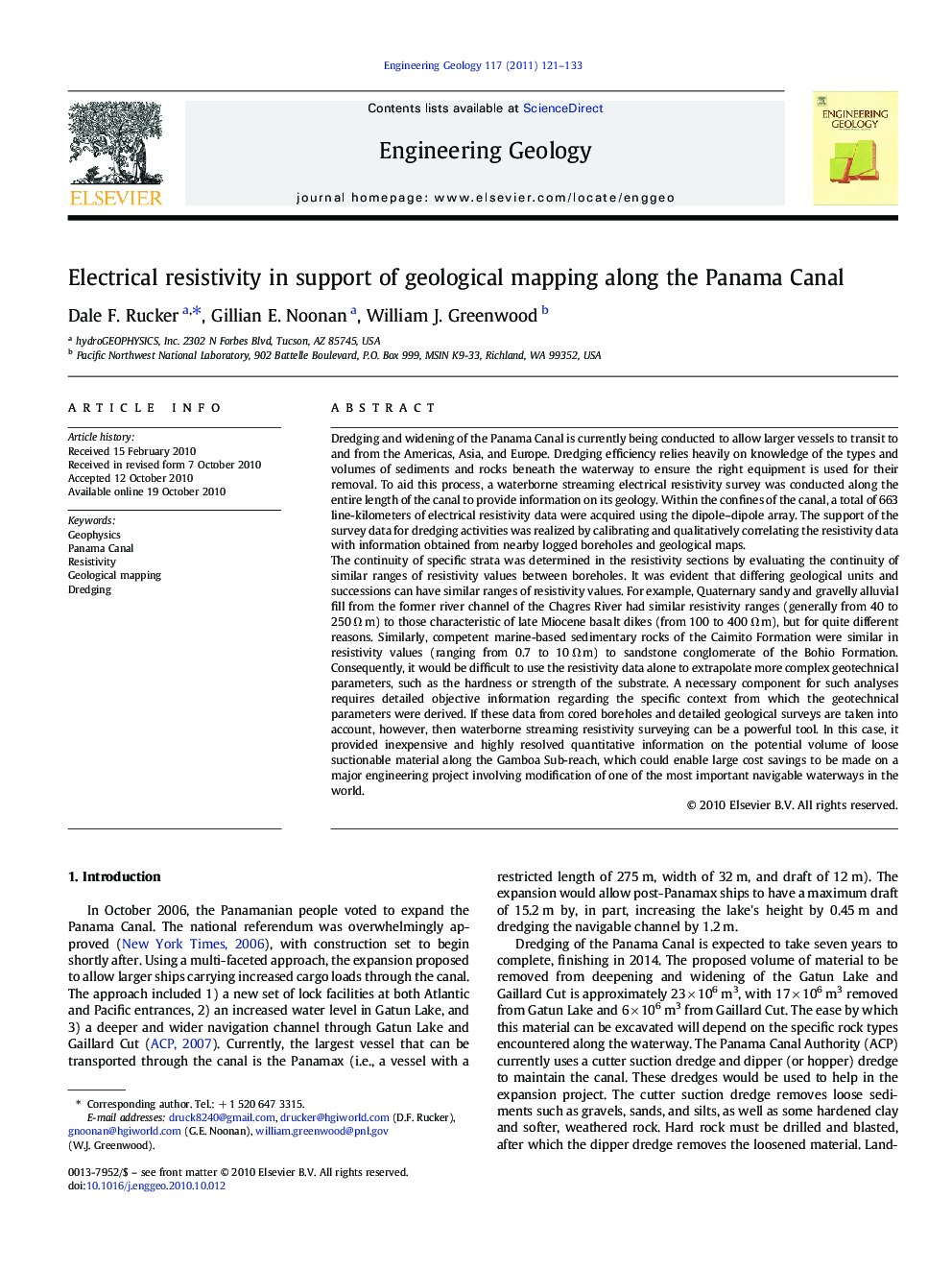| کد مقاله | کد نشریه | سال انتشار | مقاله انگلیسی | نسخه تمام متن |
|---|---|---|---|---|
| 4744115 | 1641860 | 2011 | 13 صفحه PDF | دانلود رایگان |

Dredging and widening of the Panama Canal is currently being conducted to allow larger vessels to transit to and from the Americas, Asia, and Europe. Dredging efficiency relies heavily on knowledge of the types and volumes of sediments and rocks beneath the waterway to ensure the right equipment is used for their removal. To aid this process, a waterborne streaming electrical resistivity survey was conducted along the entire length of the canal to provide information on its geology. Within the confines of the canal, a total of 663 line-kilometers of electrical resistivity data were acquired using the dipole–dipole array. The support of the survey data for dredging activities was realized by calibrating and qualitatively correlating the resistivity data with information obtained from nearby logged boreholes and geological maps.The continuity of specific strata was determined in the resistivity sections by evaluating the continuity of similar ranges of resistivity values between boreholes. It was evident that differing geological units and successions can have similar ranges of resistivity values. For example, Quaternary sandy and gravelly alluvial fill from the former river channel of the Chagres River had similar resistivity ranges (generally from 40 to 250 Ω m) to those characteristic of late Miocene basalt dikes (from 100 to 400 Ω m), but for quite different reasons. Similarly, competent marine-based sedimentary rocks of the Caimito Formation were similar in resistivity values (ranging from 0.7 to 10 Ω m) to sandstone conglomerate of the Bohio Formation. Consequently, it would be difficult to use the resistivity data alone to extrapolate more complex geotechnical parameters, such as the hardness or strength of the substrate. A necessary component for such analyses requires detailed objective information regarding the specific context from which the geotechnical parameters were derived. If these data from cored boreholes and detailed geological surveys are taken into account, however, then waterborne streaming resistivity surveying can be a powerful tool. In this case, it provided inexpensive and highly resolved quantitative information on the potential volume of loose suctionable material along the Gamboa Sub-reach, which could enable large cost savings to be made on a major engineering project involving modification of one of the most important navigable waterways in the world.
Research Highlights
► An electrical resistivity geophysical was completed along entire Panama Canal.
► The raw measured data were of high quality and inverse modeled with RES2DINV.
► The resistivity results were correlated to geological maps and borehole logs.
► Resistivity data were used to calculate material to be removed by suction dredging.
Journal: Engineering Geology - Volume 117, Issues 1–2, 10 January 2011, Pages 121–133